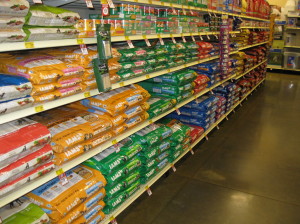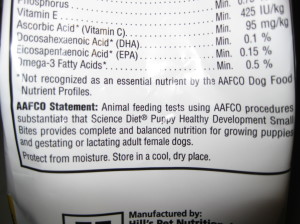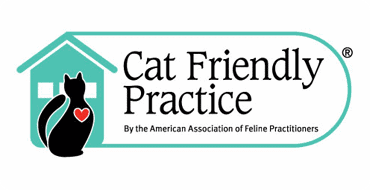If you have a pet, and you buy food for that pet, then you are well aware of the huge variety of dog and cat foods on the market. How do you even begin to decide what to feed your pet? Sorting through the vast amount of information and misinformation available on the internet can be an incredibly daunting task. This series of blog posts aims to arm you with some knowledge, and help you understand what information on the bag is helpful, and what is misleading.
The first, and surprisingly most important bit of information on your food bag is the AAFCO statement. AAFCO (American Association of Feed Control Officials) is a membership organization made of local, state, and federal agencies that regulate pet foods. AAFCO itself has no regulatory authority, but they provide the guidelines that government agencies use to ensure that pet foods meet nutritional standards and to protect you, the consumer.
The AAFCO statement is generally found near the ingredient list and guaranteed analysis, but may be elsewhere on the bag. The statement will look similar to this:
“Brand A dog food is formulated to meet the nutritional levels established by the AAFCO Dog Food Nutrient Profiles for maintenance of adult dogs“.
or:
“Animal feeding tests using AAFCO procedures substantiate that Brand Z Dog Food provides complete and balanced nutrition for growing puppies and gestating or lactating adult female dogs“.
There are 2 main points to pay attention to here. First, what life stage is the food designed for (see the bold portion of the statements above)? AAFCO recognizes three categories:
1. Puppies/Kittens (<1 year old) and gestating or lactating adult dogs/cats
2. Adult dogs or cats (>1 year old)
3. All life stages
You would think you could read the name of the food, and if it said "puppy food" it would be designed to meet a puppy's needs, and if it were for an adult it would be designed to meet an adult's needs. This is not always true, so be sure to look at the AAFCO statement regardless. If your pet food's AAFCO statement says all life stages, it means the food has to meet requirements to support the growth of a puppy as well as an adult dog. It is essentially a puppy food, and your 5 year old dog that mostly lays around or goes for maybe 1 walk per day is likely getting fat, even if you are feeding the recommended amount for their weight.
The second point to look at is whether the pet food was formulated to meet nutritional standards, or whether feeding tests were used (see italic portion of statements above). Why does this matter? Well, it is much easier and cheaper to just formulate a diet to meet nutritional standards. The tricky part here is that some nutrients will interact with others during the cooking process, and actually make some nutrients less available for the pet. So say the food has been calculated to contain a certain amount of a vitamin, but after cooking most of it was destroyed or bound to something else so the pet can’t absorb it. There is no way to predict these things. This is where doing a feeding trial is useful to ensure there are no nutritional deficiencies in the diet. If the food you are feeding has not undergone feeding trials, then your pet is essentially the guinea pig.
So the take home message here is to check the AAFCO statement to ensure you are feeding a food appropriate for your pet’s lifestage. I recommend getting a food that has been through AAFCO feeding trials so you know essential nutrients are not missing from the diet. Stay tuned for our next post about the ingredient list and guaranteed analysis, and what you can expect to learn from these.
For more information, here is a link to the FDA page discussing pet food labels.




